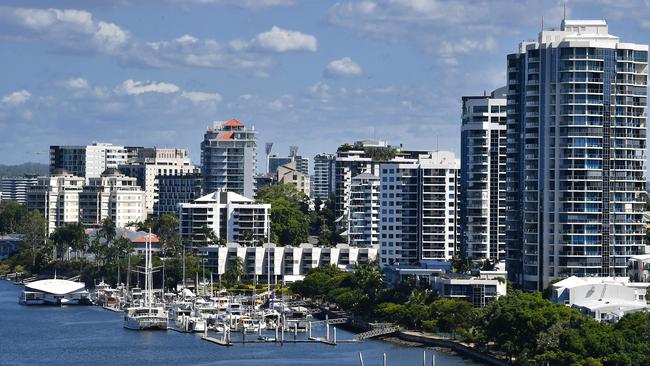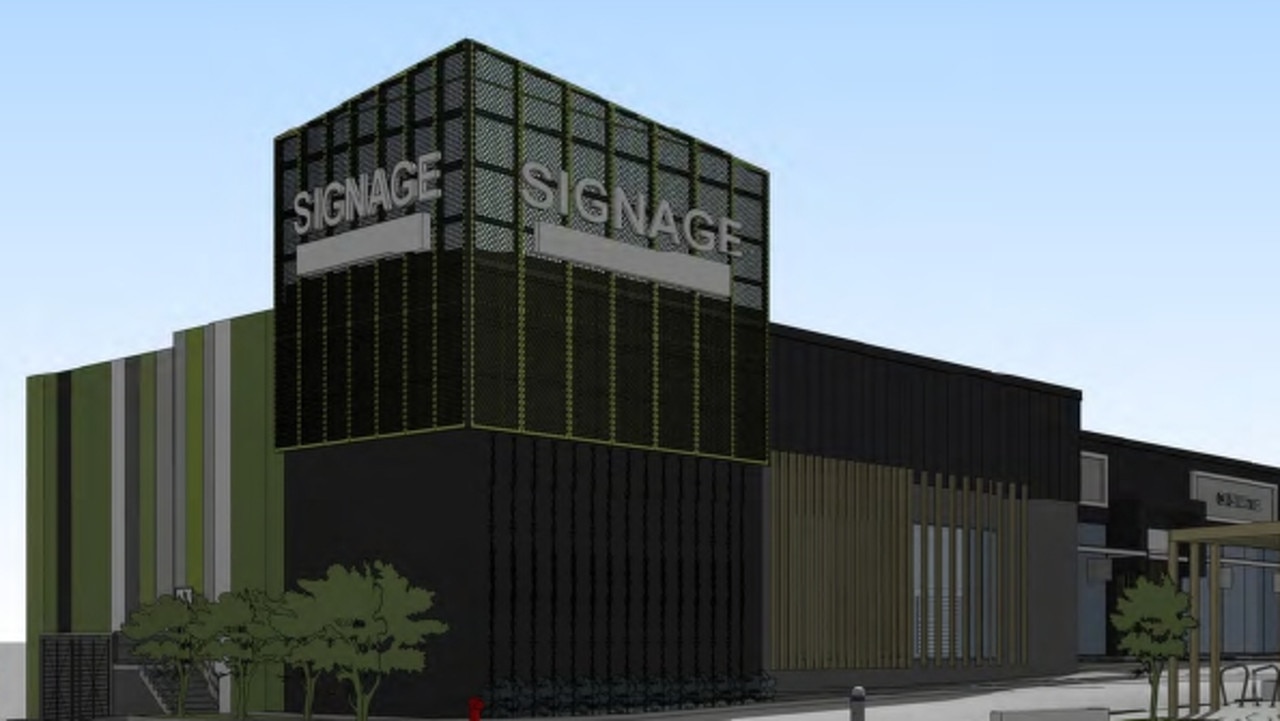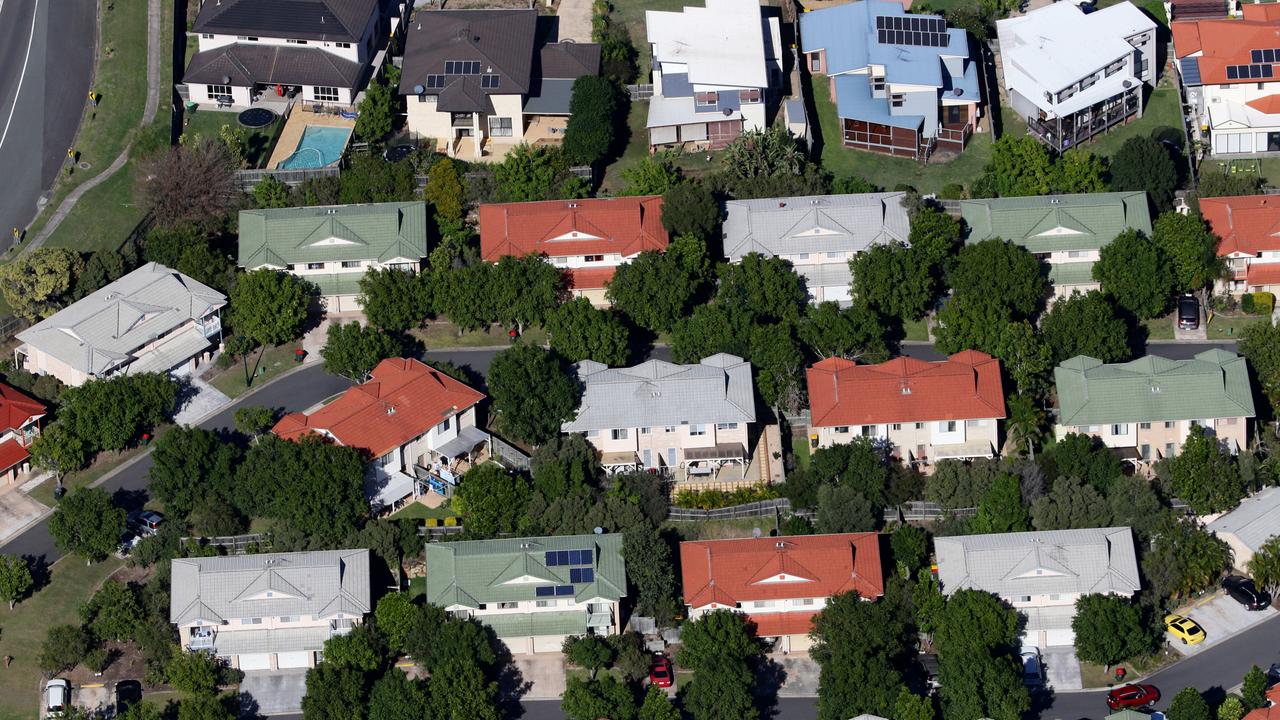Future Brisbane: Mortgages costing homeowners 41pc of income
Mortgage holders are paying $260,000 more for a house than they were five years ago, while the cost of renting has jumped $175 a week over the same period, new figures show.
Property
Don't miss out on the headlines from Property. Followed categories will be added to My News.
MORTGAGE holders are paying $260,000 more for a house than they were five years ago, while the cost of renting has jumped $175 a week over the same period, as new figures show the extent of Brisbane’s housing crisis.
Data provided exclusively by PropTrack reveals the city’s homeowners are having to dedicate 41 per cent of their income to paying off their mortgage on a house — well above the recommended 30 per cent.

The figures show that while the average household income in Brisbane has increased from $86,632 in 2018 to $111,120 today, the cost of housing has risen much more.
The median sale price for a house in the River City as of October is $800,000, compared to $538,000 only five years ago.
Brisbane’s lack of affordable housing is a major theme of The Sunday Mail and Courier-Mail’s Future Brisbane series, which will focus on liveability.

PropTrack senior economist Paul Ryan said the fact 41 per cent of an average Brisbane household’s income was going towards paying off a mortgage was concerning compared to only 28 per cent five years ago.
“I think that shows you a median household on a median income in Brisbane can’t afford to buy a median-priced house anymore,” Mr Ryan said.
“They will have to look for something towards the lower end of the market, whether that’s property size or distance from the CBD — one or both of those tradeoffs will have to be made, which wasn’t the case five years ago.

“The burden to save a deposit now for an $800,000 house compared to $500,000 house is also substantially higher.”
The figures show renters are paying $585 a week for a house on average now compared to $410 in 2018.
“Obviously incomes have gone up over that time as well, but that ($175/week) difference has got to come from somewhere and most renters aren’t in a position to have a huge amount of spare cashflow,” Mr Ryan said.

“Rents in Brisbane are up 13.4 per cent over the past 12 months on top of cost of living increases. People’s budgets are being stretched from every end, so this is going to challenge and strain a lot of households.”
Interestingly, unit rents remain almost unchanged from five years ago.
“We’ve had very fast rent growth since the pandemic, but it was pretty moderate leading into the pandemic,” Mr Ryan said.
MORE PROPERTY NEWS:
REIQ blasts doubling of Qld first-homeowner grant
Red flags that could hurt your chance to buy a home
“I think Brisbane has done a good job of building units given the affordability to rent units is mostly unchanged in contrast to houses, which shows building supply does lead to lower housing costs over time.”
But he said going forward, building more supply would be a significant challenge for the industry.
“Maybe there’s a role for government to play in sharing the costs or other innovations to give builders the confidence to start those big projects — particularly for units because they can take years and years.”

It comes as the Palaszczuk government this week announced it would double the first-homeowner grant from $15,000 to $30,000 until mid-2025.
The surprise move has attracted criticism from industry commentators who say it will only push up prices in an already tough market.
Propertyology managing director Simon Pressley said the policy would “do nothing” to address the challenges of buyers, owners or renters.
“The policy is designed to support developers, while recklessly hoping to steer gullible people into making an inferior choice for one of their most important life decisions,” Mr Pressley said.

“The ‘help’ is only for the purchase of brand new properties with a price tag up to $750,000.
“Certain people with vested interests hate me saying it, but there is decades of evidence which point to cookie-cutter new-builds being littered with potential higher risks to all buyers.”
Mr Pressley said those risks included bloated sale prices,️ major structural defects,️ construction delays, an️d reduced rates of capital appreciation.
“If governments really want to help homebuyers, provide the grant without placing handcuffs on it,” he said.
Developer Kevin Seymour of Seymour Group said doubling the grant would only overstimulate an “already stimulated market”.

“Builders will just put up the costs,” Mr Seymour said. “I feel for the government. I don’t know how they’re going to get all this housing built in the timeframe they’ve given.”
Herron Todd White Brisbane managing director Gavin Hulcombe said short-term relief was needed to increase supply.
“In my mind, that requires engagement with mum-and-dad property investors who supply around a third of all rental accommodation,” Mr Hulcombe said.
“A recent move by Western Australia’s government to incentivise investorsaway from short-stay and into the long-term rental markets may provide guidance for other jurisdictions to follow.
“There is potentially some capacity emerging in the low-rise housing construction market, but the volume of medium and high-rise residential projects remains constrained, with the ability of developers to deliver new product hampered by rising costs and limited capacity.”



